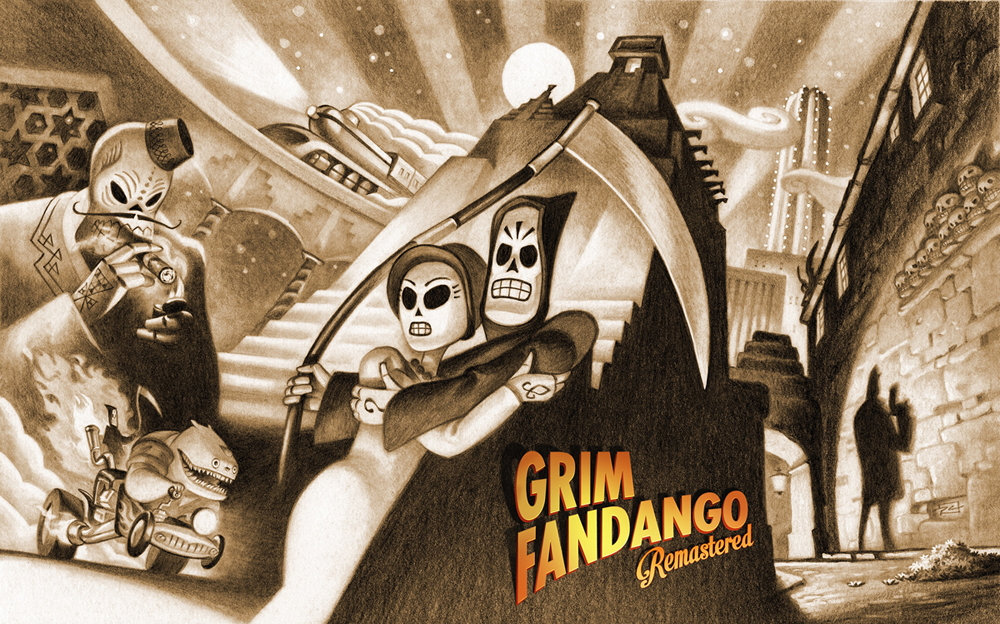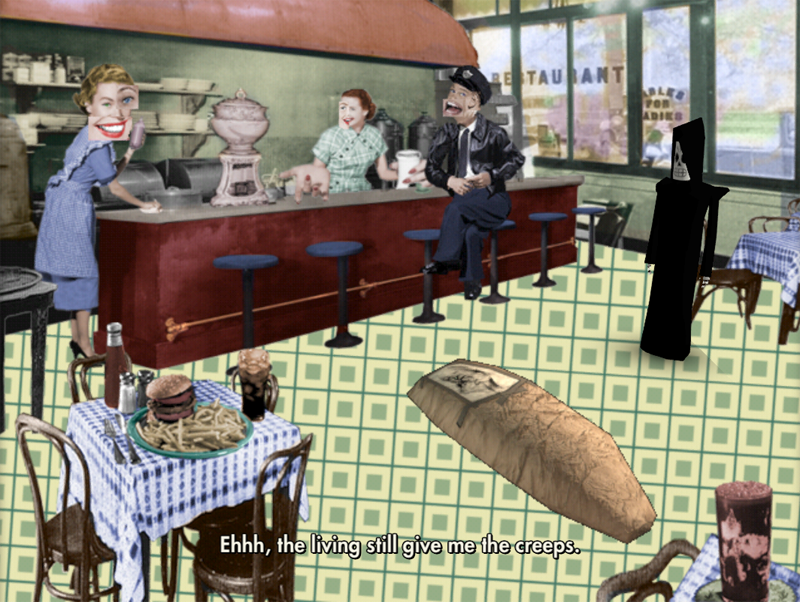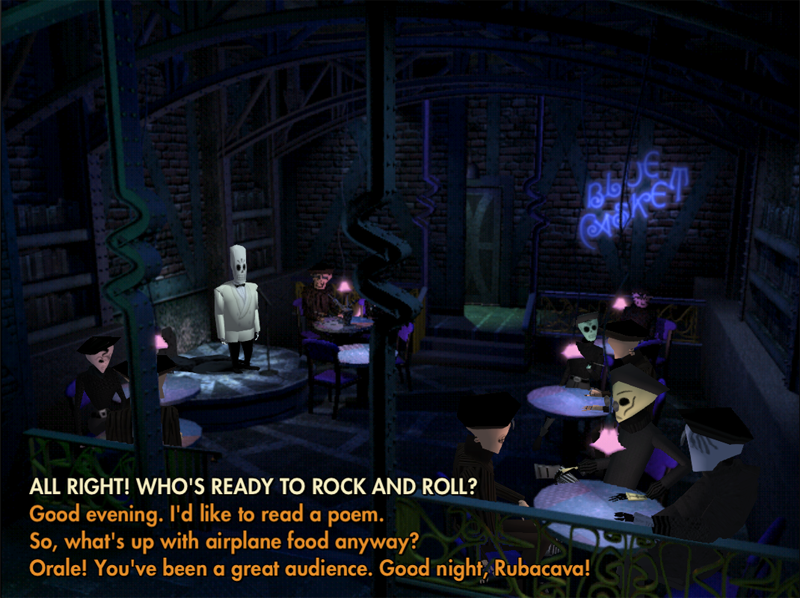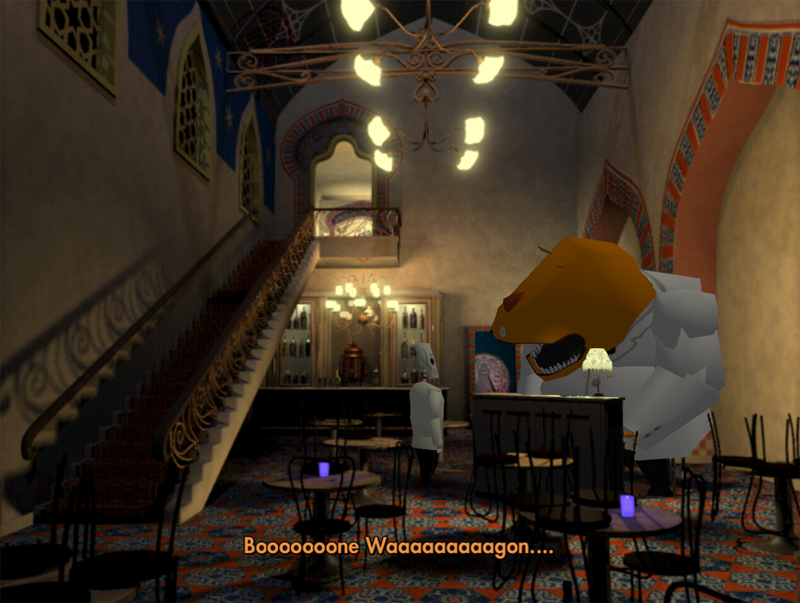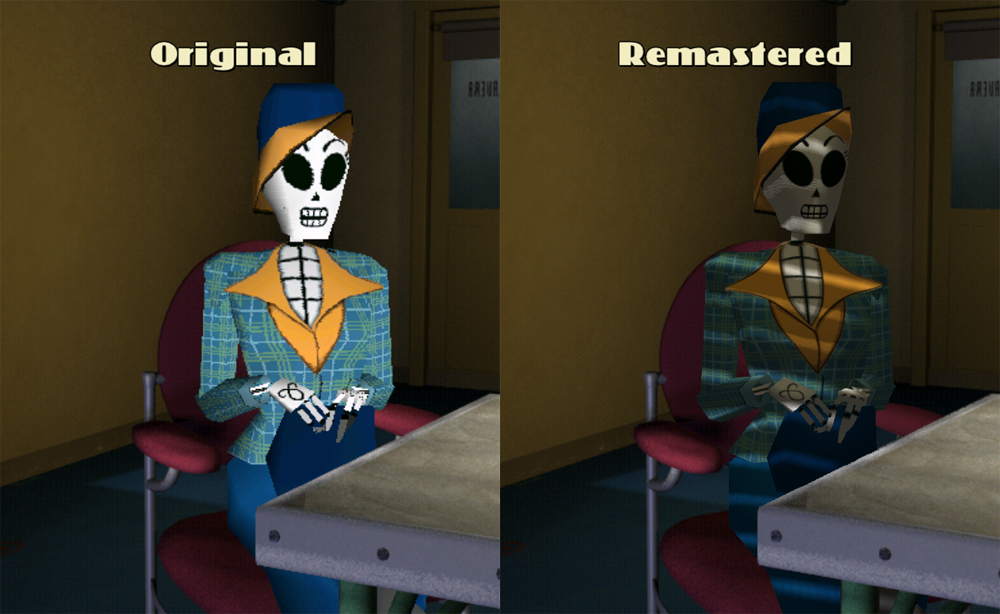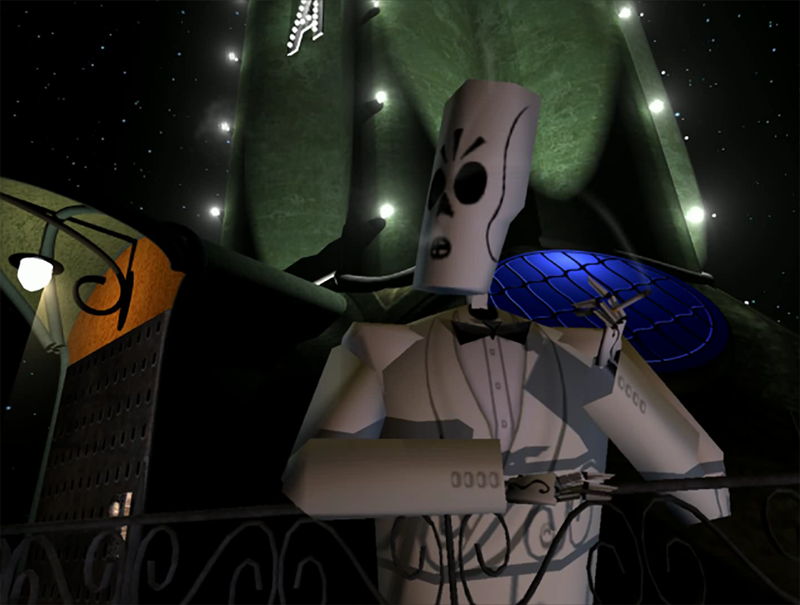When Grim Fandango was originally released in 1998, it was met with critical acclaim but poor sales. Trends in gaming were changing, and players were looking for more graphics-intensive titles with the novelty of Internet multiplayer. The age of the first-person shooter had begun and adventure games were on the wane. LucasArts, the monolith of adventure game developers, decided to cancel further development of adventure games, and let go most of their dev teams in the years that followed. For a while there, it seemed like Grim Fandango would be the last great adventure game ever made. When new games pushed it off the shelves, it basically became lost to time—out of print and held by a company uninterested in reviving it.
Fast forward to a little over a decade later, and adventure games are thankfully back on the up and up. LucasArts veterans at Telltale Games have achieved a noteworthy level of commercial and critical success with The Walking Dead games. Video game auteur and Grim Fandango creator Tim Schafer is finally revisiting the point-and-click adventure after his 2000 split with LucasArts; the Broken Age series is being developed at his own Double Fine Productions. With this new resurgence in mainstream popularity, the adventure game genre looks like it is finally here to stay. Good news for new games—great news for old ones and the people who remember them.
Now, with a new deal between the newly Disney-acquired LucasArts, Sony, and Double Fine, Grim Fandango is finally seeing the light of day again, by the hands of its original authors. While the adventure games of today have evolved in Grim’s absence, many of them are still indebted to Fandago’s artistic success. It’s about time we got the chance to revisit it. The remastered edition is a loving look back to an era when adventure games were not merely a thing, but the thing.
So, what is Grim Fandango? Inspired by the Mexican Day of the Dead, Grim is set in a fantastical purgatory populated by calaca skeletons dressed like your favorite film noir characters. Manuel “Manny” Calavera is a Grim Reaper—scythe, cloak, and all—working for the Department of Death. His job is to go to the Land of the Living, bring back the skeletal spirits of the recently deceased, and then, act as their travel agent. Turns out, the Land of the Dead is more mundane than not, and Manny is nothing but a low-level bureaucrat, hoping to make enough on commission so that he himself can afford to leave for a better afterlife. Unfortunately for him, his recent clients have been severely lacking in karmic funds, leaving him in a dead-end job.
Of course, a little noir goes a long way, and it isn’t long before Manny meets Mercedes “Meche” Colomar, a leggy (skeletal) beauty, setting off a chain of events that changes his life for the worse, and sending him both on a chase and on the run through the seedy underworld of the underworld.
It is with no exaggeration that I call the plot of Grim Fandango the best in all of video games, its characters the most memorable, and its setting the most absolutely unique. Grim sits at an intersection between so many spectacular ideas and genres; it is no mean feat that the game flies high in all aspects of its artistic direction.
In a game made with immeasurable heart and hard work, the efforts that make Grim most successful are Peter Chan’s art, Peter McConnell’s music, and Schafer’s writing. Chan’s concept designs are lauded by the entire team as the creative push that made Grim Fandango’s world a reality. Chan pulled from historical Mayan and Mexican motifs and architecture, pairing both with art deco, film noir, and his own sense of whimsical fantasy to give life to Schafer’s setting. By all accounts, he designed every single thing that could be designed, from key rooms and characters to throwaway props. McConnell’s score pulls off the same sort of fusion, jumping from big band jazz and orchestral bits to mariachi, world instruments, and even jam sessions that give the game an amazing aural texture.
It is Schafer’s pen that sees through his concept to glorious fruition. His script is some of the best comedy ever written, gleaming with copious amounts of Chandleresque wordplay, philosophical musings on a curious underworld, and hidden gems for seasoned adventure gamers. I highly recommend using the “pick up” command on everything and everyone. In the four times I’ve played this game to completion, I can’t say that I’ve ever skipped a line of dialogue. Whether it’s act-long homages to Casablanca or jokes made at the expense of claustrophobic French sommeliers, the enthusiasm and inventiveness of Schafer’s script make the entire game an easy sell.
The characters of Grim Fandango are the high relief characters of noir fiction, each with their own lovable cartoonish quality. For instance, there’s Olivia Ofrenda, the hep owner of a club for dead beatniks; or Toto Santos, the cranky Hungarian bone tattoo artist; or Glottis, your hulking, corpulent orange demon of a sidekick, born for one purpose: to drive and drive fast. Every character has a perfect voice to match as well, thanks to a uniformly great cast and Darragh O’Farrell’s voice direction.
In a cast defined by memorability, Manny and Meche are particular standouts. Both characters have an emphasized foreignness to their voices, as so many noirs are wont to do, but the script and the actors do such a choice justice in a world that is more Día de los Muertos than anything else. Manny and Meche’s respective voice actors, Tony Plana and María Canals Barrera, are both Hispanic and native Spanish speakers. Schafer encouraged both actors to improvise Spanish dialogue and slang to more accurately portray the native Spanish speakers they were, where Schafer’s lines could not. As the protagonists, their genuine voices are given all due respect and a deserved focus. Despite the bleach-white skeletons on screen, the cast feels refreshingly multicultural, and it does a better job with cultural representation than many games where characters actually have skin.
Of course, as with any masterpiece in a young medium, Grim Fandango has its share of undeniable faults. Adventure games have always been some of the most frustrating exercises in interpreting what should be perfect information. You will always have everything you need in front of you—it’s just that all that “everything” might be spread out over several screens and several minutes of tedious examining, reexamining, matching, and backtracking. The game’s puzzles are definitive examples of why the adventure games of the nineties are both loved and hated. Schafer admits in his commentary that there was barely a filter between his brain’s twisted idea of a solvable puzzle and what they actually implemented in the game. For every clever puzzle that moves one logical step at a time, there is another that requires a checklist of stuff you will need all at once.
Puzzles simply make more sense nowadays, requiring fewer jumps in logic and fewer moving parts. You sacrifice a lot of deeper “a-ha!” moments, but such games have gained an actual sense of pacing that is lacking from the often protracted and frustrating downtime of classic adventure games.
The old controls are also a flawed choice that made it into the final design. Tank controls, instead of camera-relative or even point-and-click controls, made Manny a chore to move. Some neat design elements, such as Manny’s head swiveling to look at objects of interest while you move him, are simply not worth the trouble of an otherwise slow and clunky control scheme. The remastered edition does implement the two aforementioned alternatives, but the most elegant—the point-and-click—still feels mismatched with a game that was ultimately designed with tank controls in mind.
Playing Grim Fandango requires a great deal of compromise. You get story, characters, and art design, but only after fighting with a frequently unintuitive game to enjoy it.
Still, I can’t very well fault the game for being a product of its time. The old style had to peak somewhere before it could change, and it very much seems like Grim Fandango was that peak. The remastered edition respects the authorial intent of the original game and only looks to add a fresh coat of paint—not to build a new foundation.
The game comes packaged with both the original and the remastered versions. The main differences are that the remastered version has new, crisper textures and an improved lighting system for the in-game models. The pre-rendered backgrounds and cinematics have been upscaled for newer monitors. While a bit blurry, the original efforts by the 3D artists were worth preserving, and I am glad to see these assets left intact. If anything, the new features have brought the old low-poly models and textures up to the level of the backgrounds, making for a visual update that is seamless rather than emphatic. While the new lighting can lead to some odd issues with slowdown in more crowded scenes, the ability to make Grim Fandango look that much more like a noir is well-appreciated. McConnell has also rerecorded the entire soundtrack, giving each composition a fuller sound.
The remastered version also comes with new special features. The developer commentary is not as deep and informative as you might expect commentary to be, but it should be noted that it was recorded nearly two decades after the game’s initial development. For the most part, you’re getting a lot of nostalgia and love between people who haven’t seen each other in years. Light-hearted reminiscing about the heyday of nineties adventure games is the major topic of discussion. A gallery of nearly 100 pieces of concept art has also been included.
All in all, every effort to update the original game during the remastering process was only ever meant to enhance the original artistry instead of overwriting it. At its core, it is the same Grim Fandango that it ever was.
I have to admit something. Grim Fandango is one of the very few things in this world that can completely shut off my critical faculties. I hope I have not done it a disservice by overselling it here. It is a very special game with a very special legacy. It’s a comedic fantasy-noir. It’s a classic nineties adventure game. It’s perfect in so many ways and flawed in probably just as many. But for what it’s worth, I can neither think of a better “video game” to define the term, nor a better game to stand for everything that this still-burgeoning medium strives to achieve.
Grim Fandango is available for Windows, MacOS, and Linux on both Steam and GOG. It is also available on the Playstation Network for the Playstation and the Vita.

